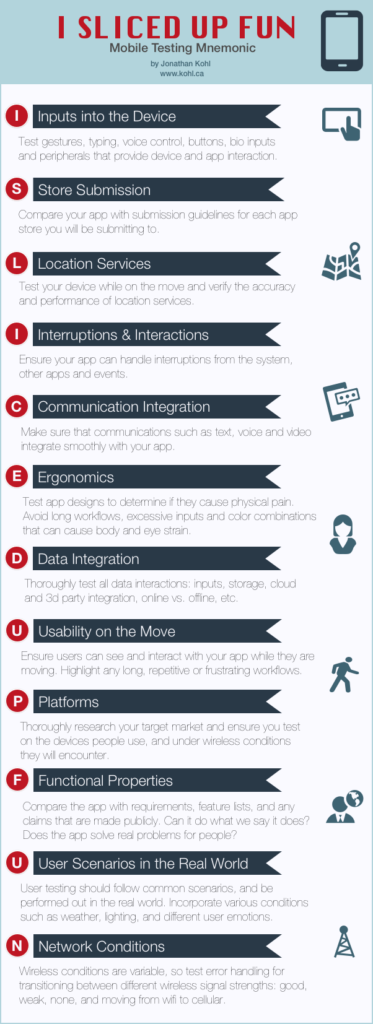Twelve years on since I created and shared the mobile testing mnemonic I SLICED UP FUN, I see that people are still using it and finding it valuable. I still use it myself on projects, so I decided to create an infographic to make it more shareable.
I call this a mnemonic because it is a memory aid to help me with my work. A catchy phrase helps me remember everything I need to think about to be thorough when testing mobile apps. Sometimes these are called heuristics, or listicles. Whatever you want to call it, it’s a helpful thinking framework to help quickly generate lots of useful testing ideas.
I SLICED UP FUN is a testing framework for mobile apps, but I use it for more than testing. As a product manager I use it in a generative or creative way as well, not only to help evaluate an existing app design, but to create something new.
If you haven’t used a thinking framework like this before, it’s quite simple to use. Read each section, and determine which ones apply to your product. If a section doesn’t apply, skip it and move to the next. Once you have a list that is applicable to your work, use each item in the list to generate ideas for that category. Once you have a few relevant ideas under that section, move to the next. Then review what you have, and see if there are gaps. Whenever you’re able, include other people to help you generate more and better ideas.
Once you have generated enough ideas, put them into action, whether it is testing, design, or other work you need to do.
